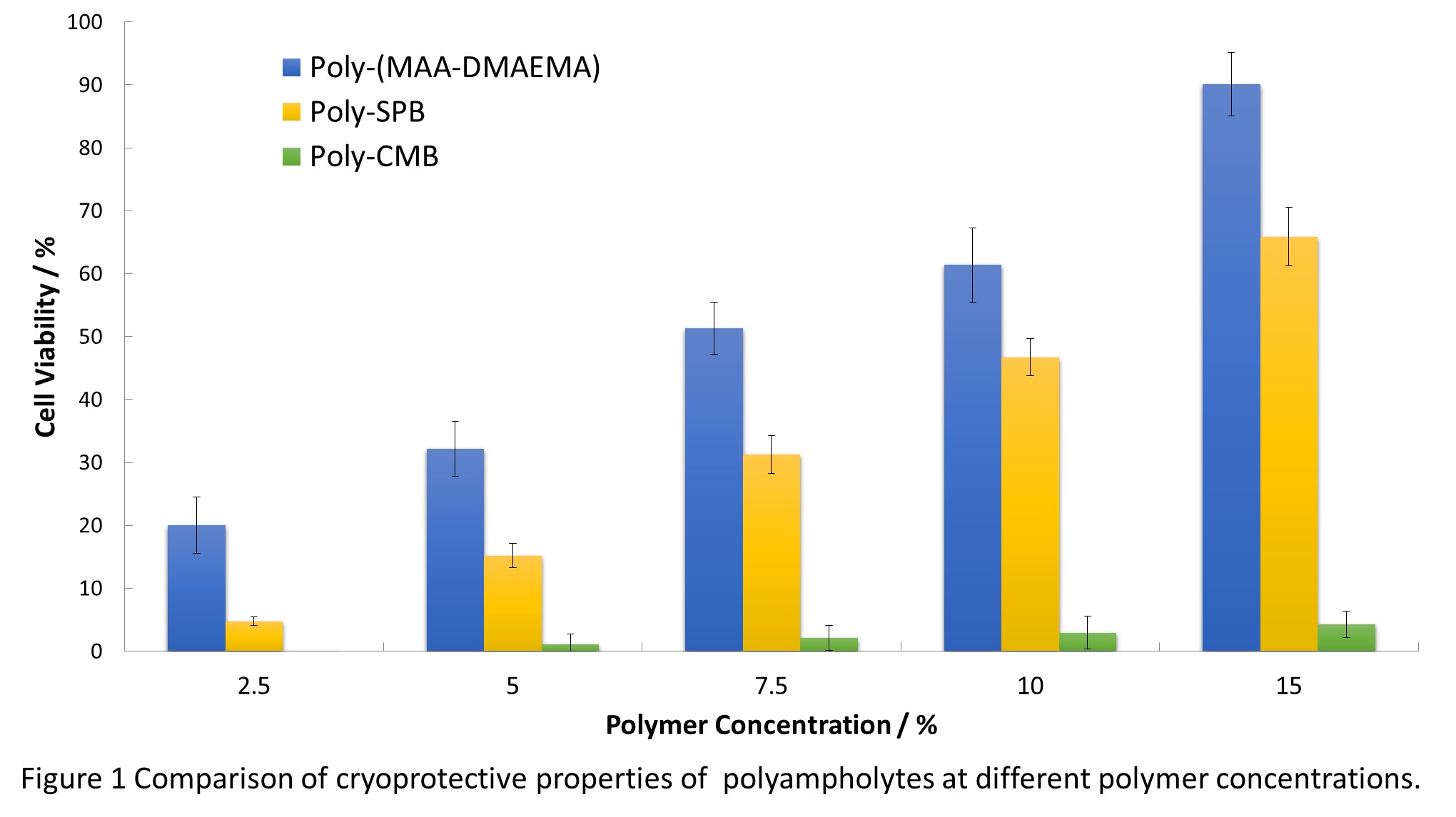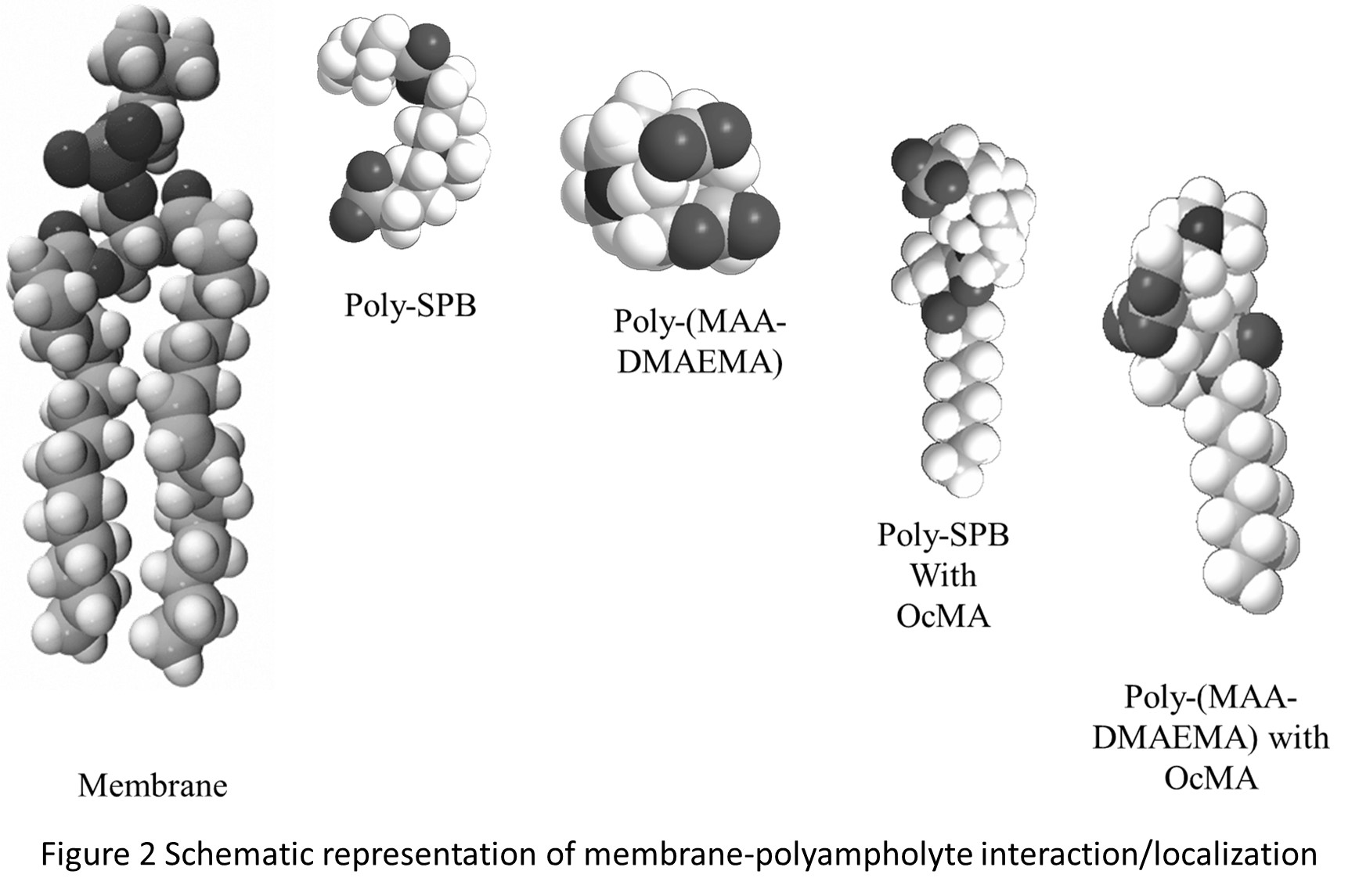Introduction: Cryopreservation is the use of low temperatures for long time preservation of cells, tissues, organs, etc. It is an indispensable tool for numerous other applications. The most frequently used CPAs in clinical use today are dimethyl sulfoxide and glycerol, but they have some serious drawbacks; hence there is an urgent need to develop newer and more biocompatible CPAs[1]. In this report, I have synthesized different synthetic polyampholytes. The polyampholytes showed disparate cryoprotective properties despite having only minor structural differences in their backbone. We unveiled the structure activity relationship and the molecular mechanism of cryopreservation which had not been studied before.
Materials and Methods: Polymers were synthesized by reversible addition fragmentation chain transfer (RAFT) polymerization[2]. The three polymers prepared were poly-(MAA-r-DMAEMA) (copolymer of methacrylic acid and 2-dimethylamino ethyl methacrylate), poly-SPB (poly-sulfobetaine) and poly-CMB (poly-carboxymethyl betaine). Molecular weight and functionality was also varied and theoretically controlled using the principles of living polymerization. To investigate the cryoprotective property, mouse fibroblast cells, i.e., L929 cells were used. Further, to elucidate the mechanism, we studied the interaction of polyampholytes with the cell membrane on freezing using liposomes carried out various analyses like IR spectroscopy, leakage experiment, DSC and electron spin resonance (ESR) spectroscopy. We also studied the behaviour of polymer in solution state using cryomicroscopy and temperature dependant 1H solid state NMR using magic angle spinning conditions.
Results and Discussion: Poly-(MAA-DMAEMA) showed excellent property, whereas poly-CMB didn’t exhibit any such property and poly-SPB showed intermediate property.

This result showed that polymer structure and the functional groups dictates the cryoprotective properties. Introduction of hydrophobicity led to a significant increase in viability suggesting the importance of hydrophobicity.
In order to elucidate the mechanism, we carried out various studies. To identify the localization of different polymers around/within the cell membrane, ESR studies were done and it was observed that cryoprotective polymers have greater penetration inside the membrane and affect the membrane fluidity also.

To ascertain the ability of polymer to prevent ice recrystallization, the effect of polymers on the size of ice crystals was studied and it was seen that cryoprotective polymer, especially those modified with hydrophobic monomer showed extensive protection against ice recrystallization. Solid state NMR was employed to study polymer chain dynamics during freezing. Results showed that cryoprotective polyampholyte forms irreversible gel/matrix around cell membrane and thus act by protecting cells from stresses such as drastic changes in soluble space size and osmotic pressure[3].

Conclusions: Synthetic polyampholytes can be tuned to be excellent CPAs where polymer structure and functionality determines their cryoprotective ability. Polymers cryopreserve cells by a synergistic effect where a lot of parameters are involved. With this study, mechanism of cryopreservation has been revealed which would enable for a more efficient molecular design of CPAs in future and for stem cell cryopreservation.
This work was supported in part by Grant-in-Aid for Young Scientists (B), MEXT, (Grant no: 25870267) for providing financial support to this project.
References:
[1] K.Matsumura and S.H. Hyon, “Polyampholytes as low toxic efficient cryoprotective agents with antifreeze protein properties”, Biomaterials, Vol. 30, 2009.
[2] R.Rajan and K.Matsumura, “Cryoprotective properties of completely synthetic polyampholytes via reversible addition-fragmentation chain transfer (RAFT) polymerization and the effects of hydrophobicity”, J. Biomater. Sci., Polym. Ed., Vol. 24, 2013.
[3] K. Matsumura, S.H. Hyon, “Cryoprotective properties of polyampholytes”, Cryobol. Cryotechnol., Vol. 59, 2013.